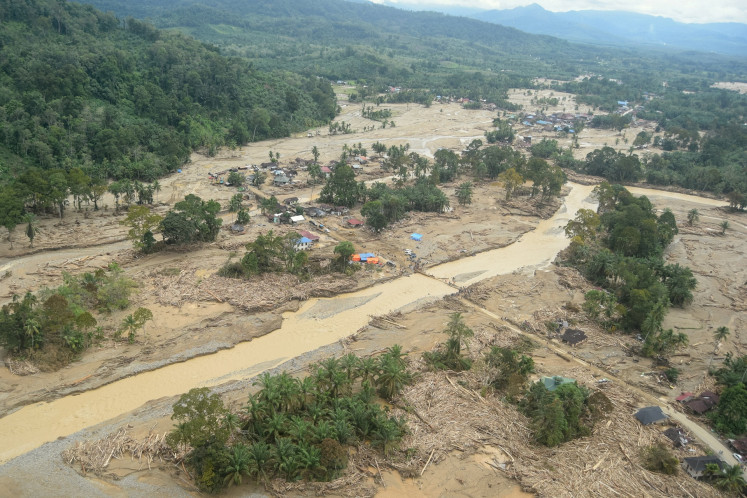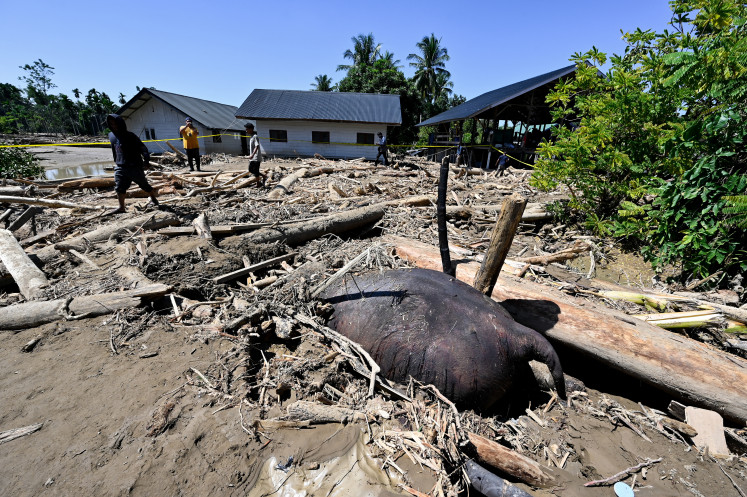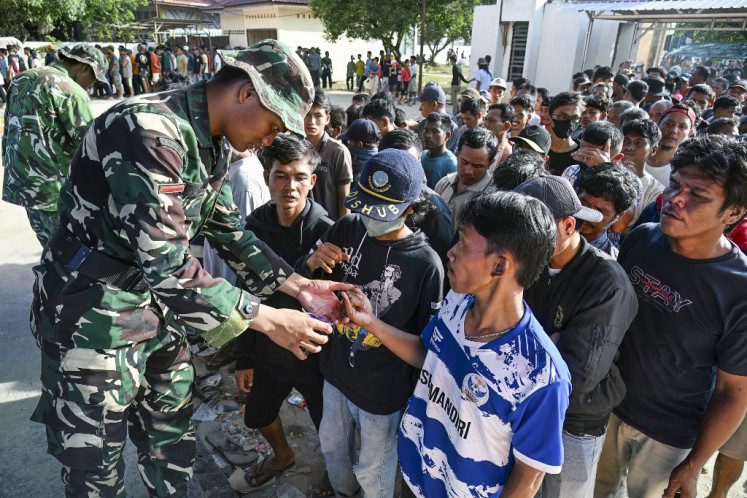Popular Reads
Top Results
Can't find what you're looking for?
View all search resultsPopular Reads
Top Results
Can't find what you're looking for?
View all search resultsGovt urged to improve management of tsunami shelters
The Tsunami Alert Community (Kogami), an NGO educating people on disaster risk reduction in West Sumatra, is urging the provincial administration to improve the management of escape buildings or temporary evacuation places (TES) to increase their effectiveness
Change text size
Gift Premium Articles
to Anyone
T
he Tsunami Alert Community (Kogami), an NGO educating people on disaster risk reduction in West Sumatra, is urging the provincial administration to improve the management of escape buildings or temporary evacuation places (TES) to increase their effectiveness.
Kogami executive director Tommy Susanto said that although the provincial and Padang city disaster mitigation agencies (BPBD) had announced a number of buildings as TES, their effectiveness was still in question.
'The buildings will not function optimally unless they come with signboards identifying them as TES, the owners agree to open the buildings when there is an earthquake that has the potential to cause a tsunami and people are regularly trained to evacuate to the buildings,' Tommy told The Jakarta Post, on Sunday.
He also questioned why a number of buildings located within 500 meters from the shoreline had been publicized as being TES despite the fact that they were at risk of being destroyed when a tsunami hit.
The only real new TES, according to Tommy, were two that were located in Koto Tangah. Both, which were opened only three weeks ago, were built by the National Disaster Mitigation Agency (BNPB) and each had the capacity to hold between 4,500 and 5,000 evacuees.
'Both are in need of better daily building management and people in the surroundings also need to be trained to make use of them,' he said.
Lack of management had led to traffic congestion and panic everywhere during the 2012 earthquake as hundreds of thousands of people drove to the east, away from the beach.
They did not make use of the buildings previously known as shelters, such as school buildings, because the school keepers would not open the gates for evacuees.
'Such things would not happen if the regional administrations had the guts to officially declare the buildings as TES and put signboards there,' Tommy said.
He said such a situation could occur again if the management of the TES buildings was unclear and people lacked knowledge.
Kogami recorded that between 300,000 and 400,000 of Padang City's 1 million population were possibly threatened by a tsunami. Most of them lived in the Koto Tangah district, which is a sloping area and lacks escape routes for getting away from the beach.
Tommy admitted that efforts had been undertaken by the government after experts considered Padang to be a tsunami-prone city. Similar efforts had also been done by the private sector, including the Ibis and Grand Zuri hotels, which had declared their buildings to be public tsunami shelters.
Tommy, however, asked the BPBD to be selective in naming a building as a TES, to apply better TES management and to regularly train locals on the use of a TES. He also suggested that buildings located within 500 meters of a beach should not be named TES.
The head of the provincial BPBD's prevention and preparedness division, Rumainur, said that there are currently 26 buildings with a combined capacity for 70,000 evacuees that could function as TES in Padang. The number does not include two more that are to be built this year in Koto Tangah.
Rumainur said that some 500,000 people in Padang live in tsunami red zones. Of them, 200,000 would not be able to escape away from the beach. The existing TES, he said, would be able to accommodate some one-third of the people.
'We only need to build TES to accommodate the remaining 130,000 people,' Rumainur said.
Of the existing TES buildings, according to Rumainur, most were government office buildings that had been rebuilt stronger after the 2009 earthquake, school buildings, campuses, mosques, new hotels and old buildings that had survived previous tsunami.










